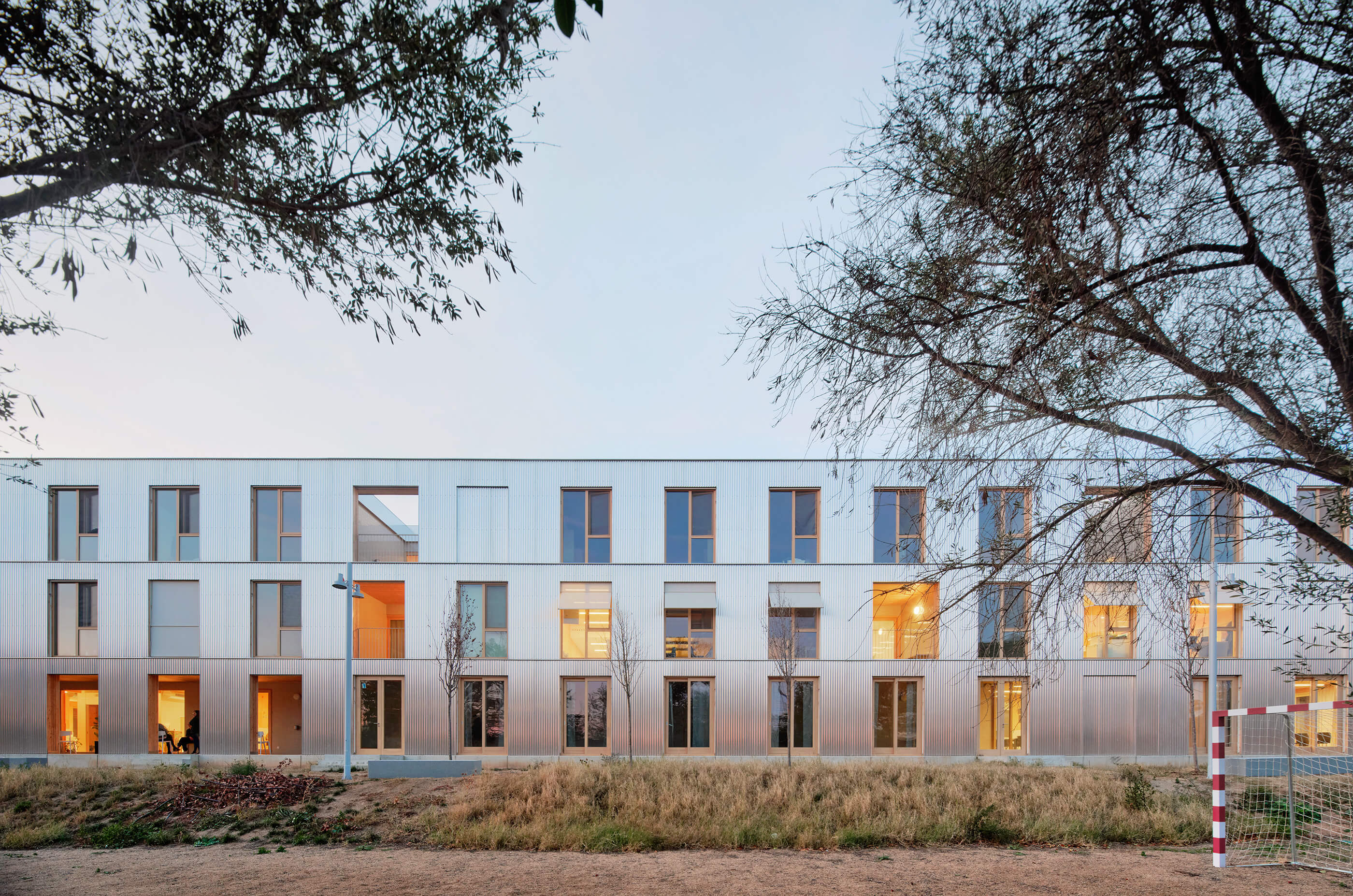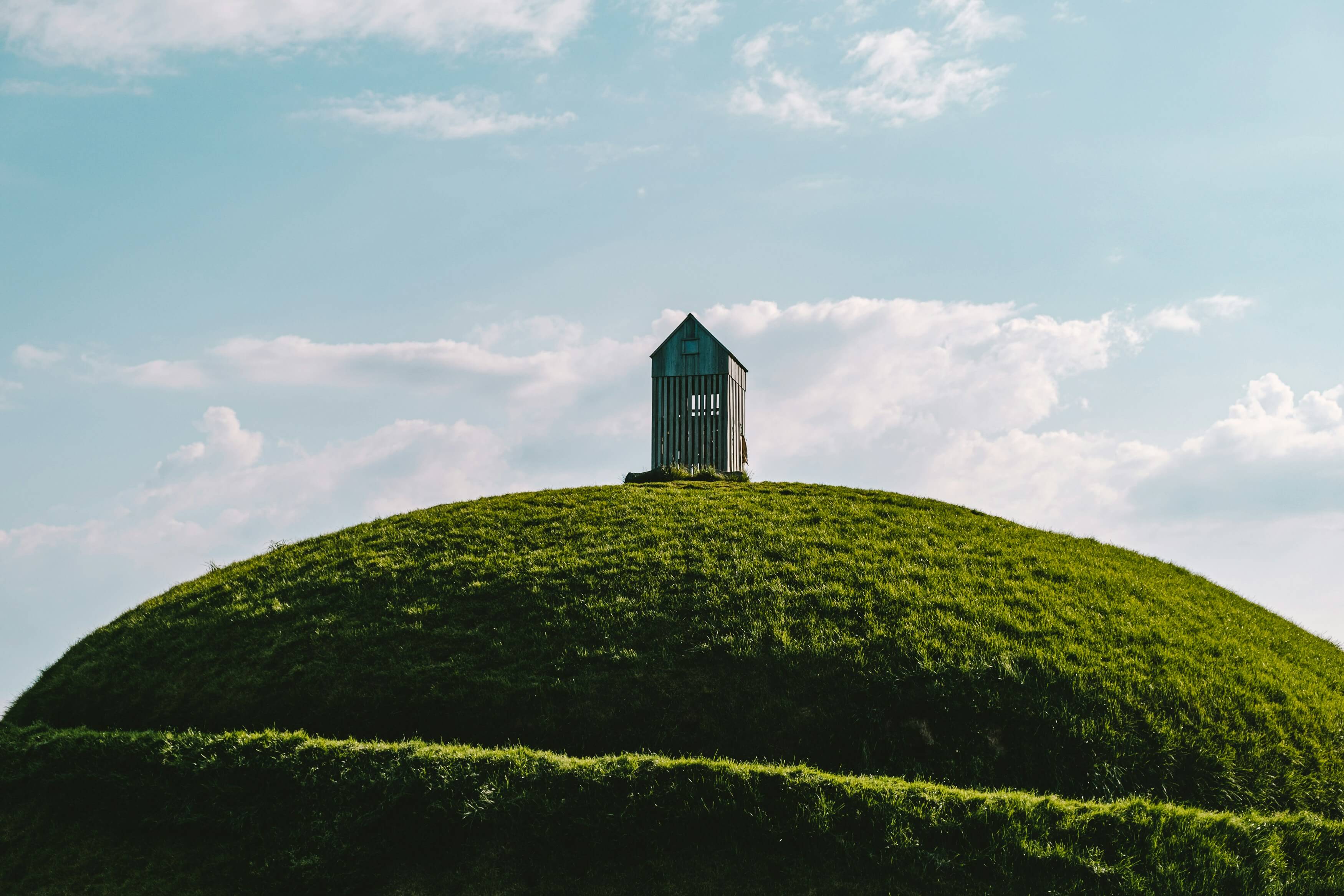
The green hill of Thufa on Reykjavik’s coast, Iceland. Source.
Reykjavik, the capital of Iceland, is known for its stunning natural landscapes, vibrant culture and pioneering approach to sustainable design and green architecture. In a world where sustainability is essential, Reykjavik shines as a prime example of how cities can weave eco-friendly practices into urban development, setting a benchmark for metropolises worldwide.
This article explores Reykjavik’s most sustainable architectural projects, the urban design initiatives driving sustainability and the significant influence of Icelandic culture on the city’s architecture.
Sustainable Architectural Projects in Reykjavik
Iceland, a country at the forefront of sustainability, has turned Reykjavik into a hub of innovation in green architecture. Local projects meet high environmental standards, distinguished by their innovative design and harmonious integration with the natural landscape.
1. Harpa Concert Hall and Conference Centre
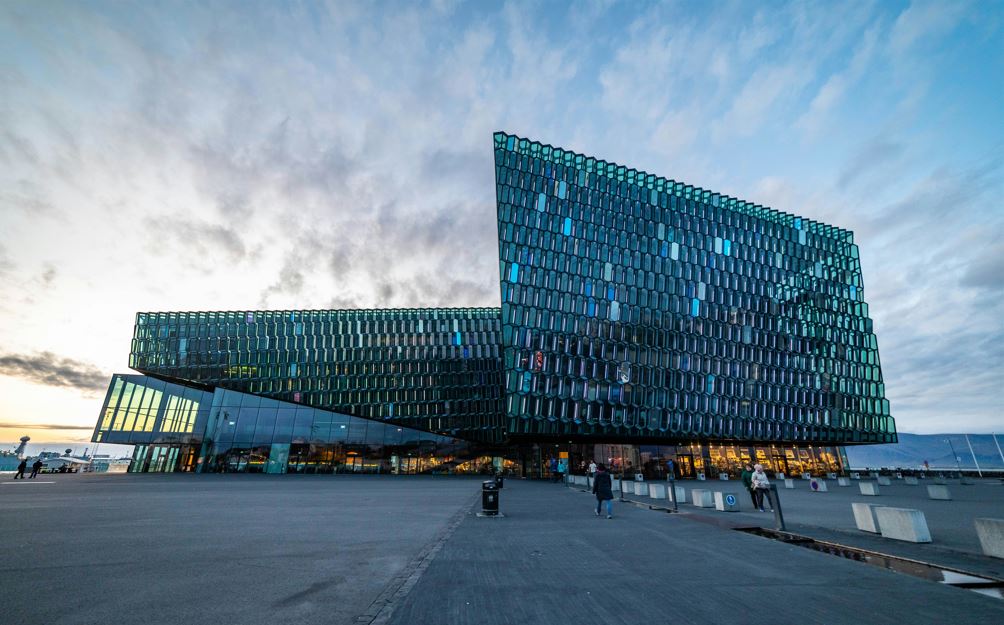
Harpa Opera House, Reykjavik, Iceland. Source.
The Harpa, designed by Henning Larsen Architects (Denmark) and Batteríið Architects (Iceland), is an iconic example of how Reykjavik blends sustainability with innovative design. Opened in 2011, this building has become a famous city landmark. Its facade of hexagonal glass panels reflects light and changes colour depending on the position of the sun. This creates a dynamic interaction with the natural environment.
Beyond its striking design, the Harpa is a prime example of sustainable architecture that incorporates advanced energy management systems. First, it uses geothermal heating, a renewable energy source that is plentiful in Iceland. In addition, natural ventilation and high-efficiency thermal insulation are also key elements of its design, significantly reducing its carbon footprint.
2. The Nordic House
Designed by the acclaimed Finnish modernist architect Alvar Aalto (1898-1976), The Nordic House is another notable example of sustainable design in Reykjavik. This work was one of his final projects and is a hidden gem among his more famous creations. However, the building features many of Aalto’s signature elements. It reflects the Nordic approach to sustainability and respect for the environment, from the ultramarine ceramic roof with its organic shape that recalls the surrounding mountains, to the central well of the library and the extensive use of natural materials such as tiles, wood and white plaster.
The design of the Nordic House minimises its environmental impact through sustainable construction techniques. For example, its orientation is optimised to maximise natural light, reducing the need for artificial lighting and, therefore, energy consumption. Furthermore, the integration of the landscape demonstrates how a building can be both functional and respectful of the natural environment. Alvar Aalto, renowned for designing the furniture in his buildings, left his distinctive mark on the Nordic House. He crafted the lamps, much of the furniture, and other interior details, reflecting his holistic approach to design.
3. The Marshall House
The Marshall House is a former flour mill that has been converted into a cultural and artistic hub. It exemplifies the trend of repurposing and adapting existing buildings in Reykjavik, a practice goes beyond just preserving architectural heritage. It also reduces resource consumption and waste production associated with the construction of new buildings.
The project, led by the Icelandic firm Kurt og Pí, focuses on sustainability by preserving the building’s original structure while incorporating modern elements that enhance its energy efficiency. LED lighting and advanced climate control systems are some of the standout features of this project. All in all, these factors have made The Marshall House a model of sustainable redevelopment.
Urban Design Initiatives Promoting Sustainability
In addition to individual architectural projects, Reykjavik has embraced urban design initiatives that foster sustainability across the entire city. These initiatives enhance the quality of life for residents while establishing Reykjavik as a city that embodies conscious design.
One of the key pillars of sustainable urban development in Reykjavik is the ambitious Master Plan 2040. The plan aims to create a compact, green city where urban development seamlessly integrates with the natural environment. Ultimately, its goal is to reduce carbon emissions, enhance energy efficiency and improve infrastructure for pedestrians and cyclists.
Interestingly, a key strategy of the plan is the densification of urban areas. As a result, the city is prioritising development within existing urban zones rather than expanding into new ones. This not only preserves the surrounding natural spaces but also promotes a more sustainable lifestyle by reducing reliance on cars.
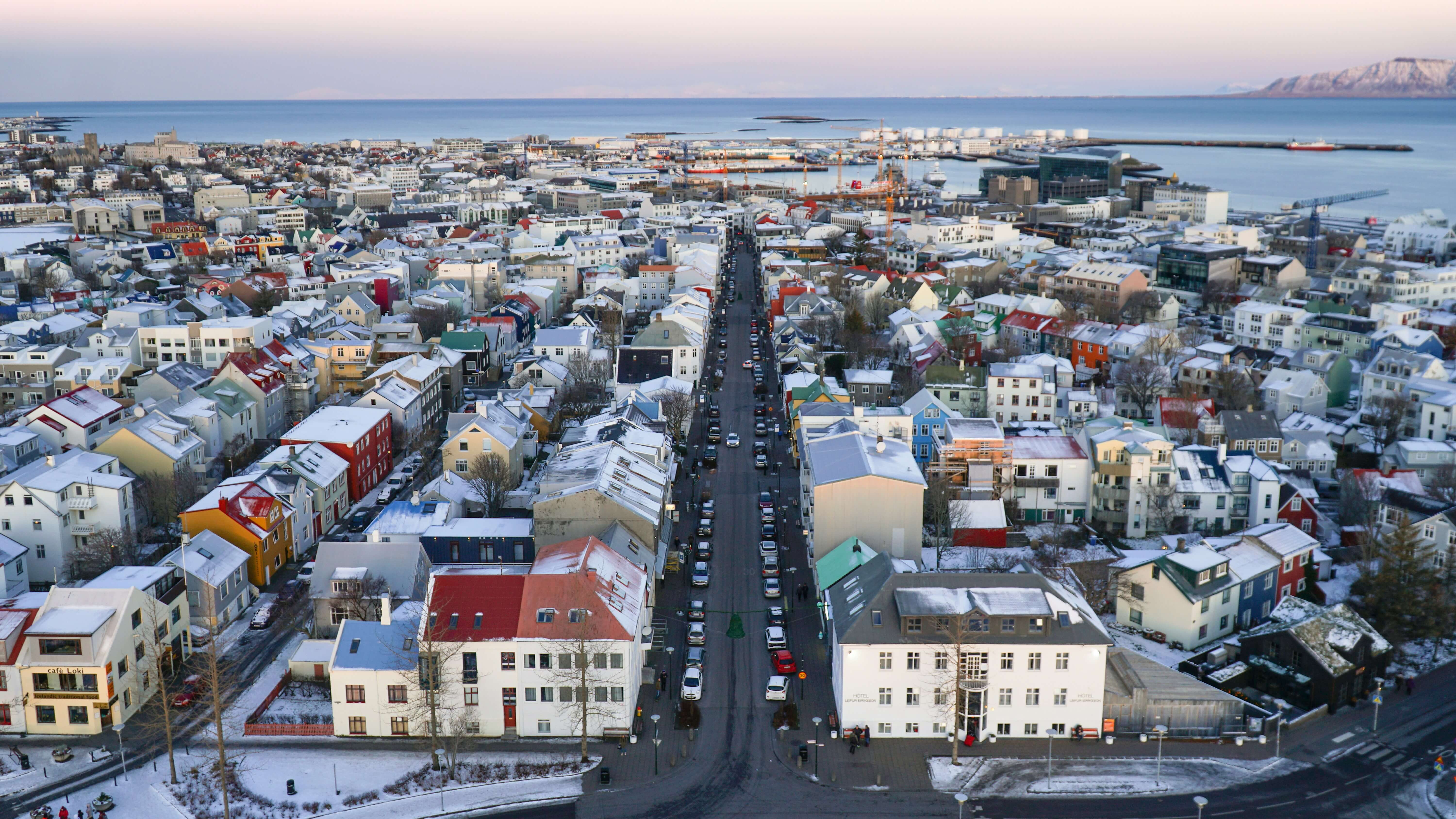
Aerial view of Hallgrimskirkja, Reykjavik, Iceland. Source.
Reykjavik has also made significant investments in its public transportation system, aiming to reduce carbon emissions and improve urban mobility. One of the most prominent projects is the development of Borgarlínan, a rapid bus system powered by electricity. This system will both reduce traffic congestion and provide an eco-friendly alternative to private transportation.
What’s more, the city has established an extensive network of bike lanes and encouraged the use of electric bicycles. This makes sustainable travel more accessible for residents. Similarly, pedestrian infrastructure has also been improved with safer and more accessible streets, promoting an active and healthy lifestyle.
The Geothermal Energy District of Reykjavik
Iceland is a global leader in the use of geothermal energy, and Reykjavik has maximised this natural resource to power the city sustainably. In fact, the city boasts one of the largest geothermal district heating systems in the world. It supplies heat and hot water to the majority of homes and buildings.
This approach not only lowers carbon emissions but also provides a secure and dependable energy source. Furthermore, geothermal energy is used to generate electricity, making Reykjavik’s power grid one of the cleanest in the world.
The Influence of Nature on Design
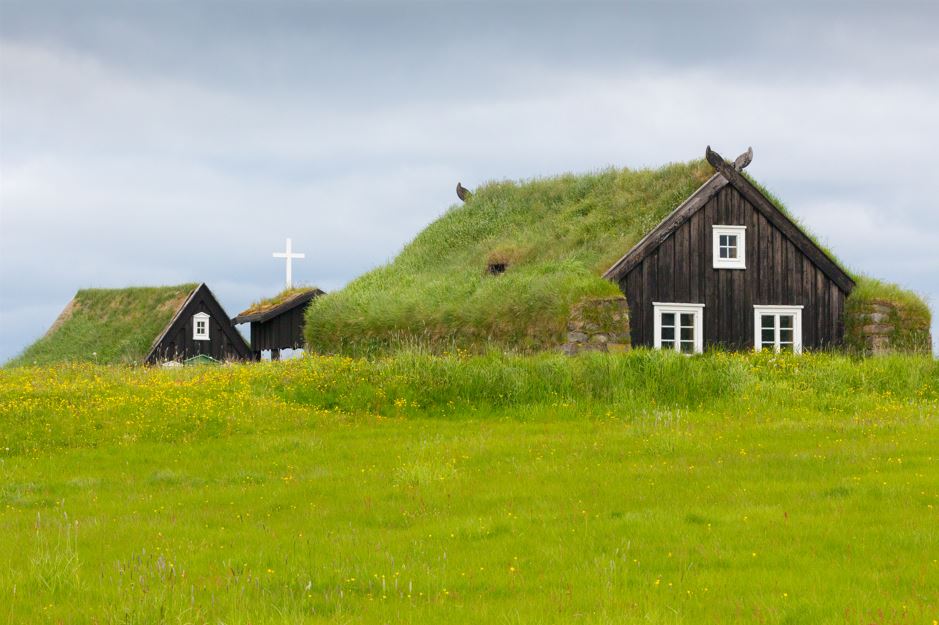
Arbaer open air museum, Reykjavik, Iceland. Source.
Iceland is a land of natural contrasts, from glaciers and volcanoes to geysers and geothermal lagoons. This closeness to nature has a profound influence on Reykjavik’s architectural design. Buildings are often designed to blend with the landscape, using local materials and construction techniques that minimise environmental impact.
For example, many buildings in Reykjavik are constructed with wood and stone. These materials are plentiful in Iceland and blend effortlessly with the natural environment. Moreover, building orientation and outdoor space planning are often carefully designed to account for wind direction, sunlight and panoramic views. This creates a seamless harmony between indoor and outdoor spaces.
The Role of the Community in Urban Design
Icelandic culture places a strong emphasis on community and collective well-being, a value that is reflected in Reykjavik’s urban design. Public spaces, such as parks and squares, are designed to encourage social interaction and foster a sense of community. These spaces are designed to be both accessible and welcoming. They incorporate sustainable features such as durable materials and efficient water management systems.
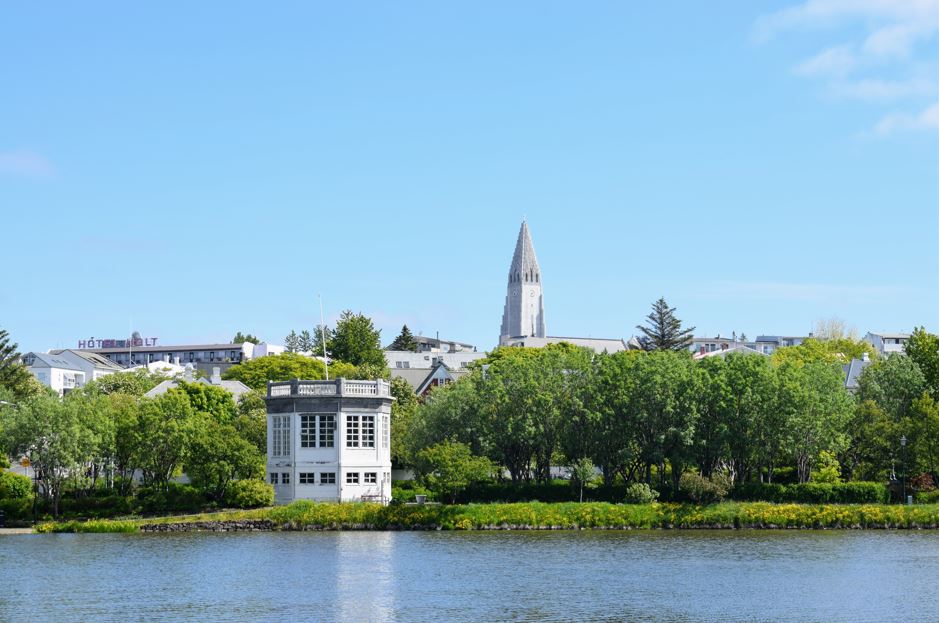
Hljómskálagarður park, Reykjavik, Iceland. Source.
An example of this is Hljómskálagarður Park, a green space in the heart of Reykjavik that has been renovated to enhance its sustainability. Native trees have been planted, water management has been enhanced to prevent flooding, and community activity spaces have been added. All for the goal of creating a park where nature and the community coexist in harmony.
Icelandic culture is deeply rooted in respect for nature and community. It also plays a crucial role in Reykjavik’s approach to design and architecture. This respect is evident in the way architects and designers approach each project, ensuring that sustainability is not merely a trend but a core element of the creative process.
Reykjavik has become a city that embodies design and sustainability. It is an inspiration for other cities to integrate eco-friendly practices into their urban development. Through its innovative architectural projects, urban design initiatives and the influence of its rich cultural heritage, Reykjavik proves that it is possible to create a modern city in harmony with nature. The Icelandic capital serves as a reminder that sustainability is an urgent necessity in the world of design and architecture. As cities worldwide grapple with the challenges of climate change and urban growth, Reykjavik offers a model to emulate. It shows that with commitment, innovation and a profound respect for the environment, a sustainable future is within reach.

